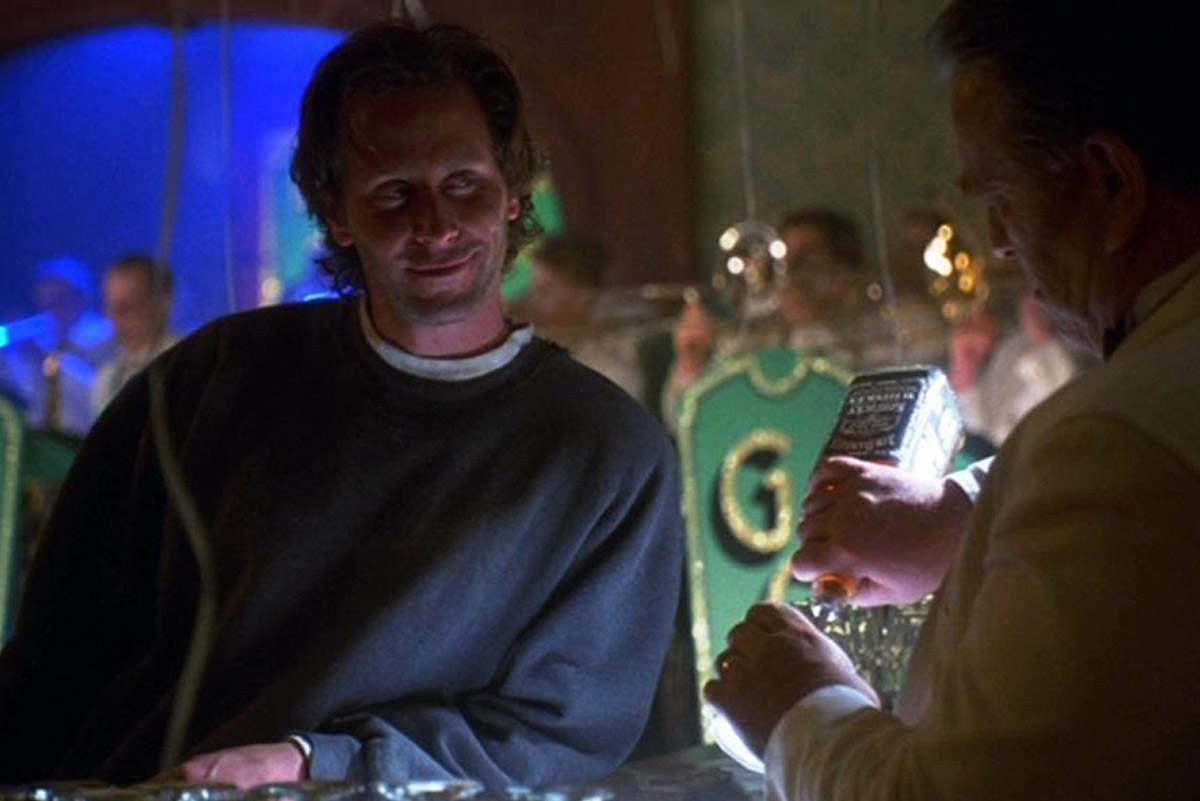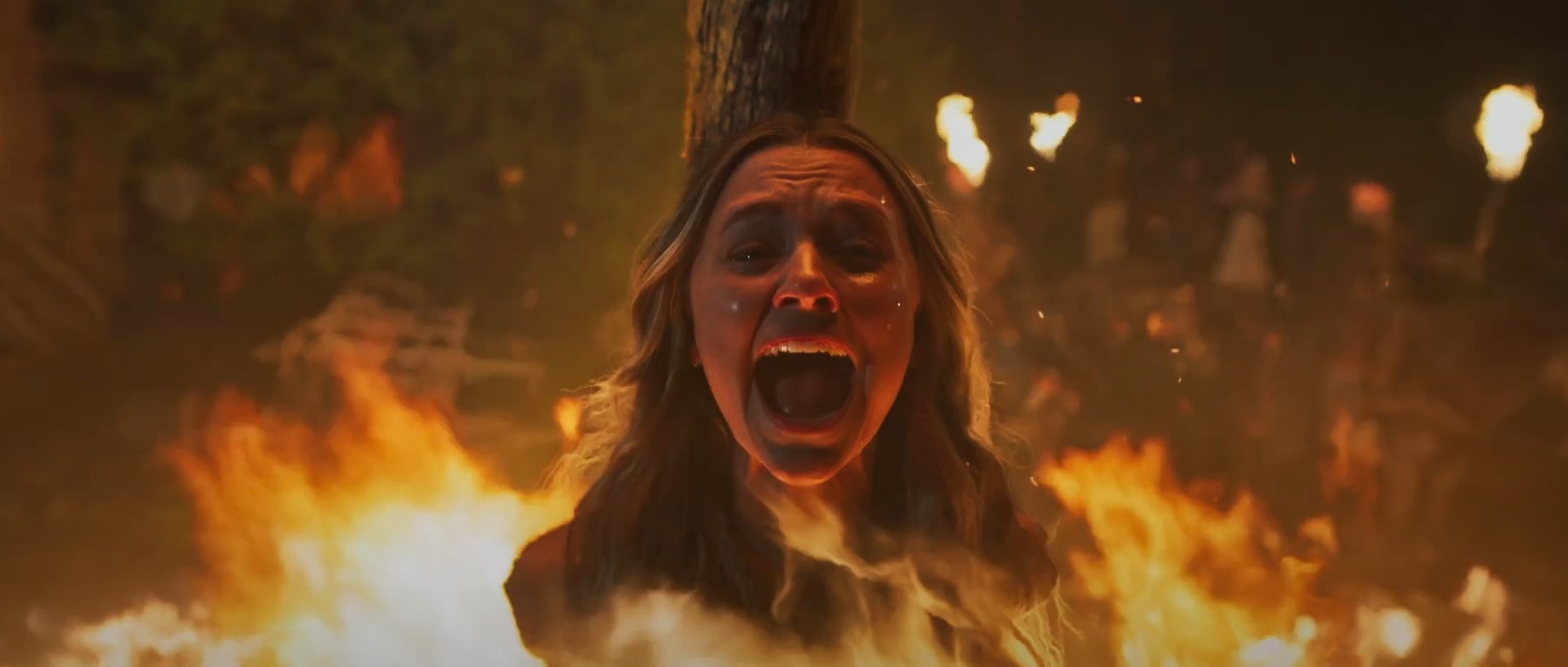Interviews
Mike Flanagan on How ‘Doctor Sleep’ Also Honors Mick Garris’s ‘The Shining’ [Interview]

It doesn’t take long to realize that Mike Flanagan’s sequel to The Shining, Doctor Sleep (read my review), isn’t just a sequel. It’s also a film that revisits and recontextualizes Stanley Kubrick’s classic horror film, and the beloved Stephen King novel that preceded it. Fans of both the book and the movie can find something to love and appreciate about Doctor Sleep, but there’s another version of The Shining out there that nobody is talking about, isn’t there?
Back in 1997, Stephen King wrote a TV miniseries of his classic haunted hotel story. This new version of The Shining was directed by Mick Garris (The Stand), and starred Steven Weber (The Perfection) as Jack Torrance, the struggling alcoholic who goes mad from isolation and tries to kill his wife and son. And although it’s arguably more faithful than the Kubrick version, it’s nowhere near the most popular version of The Shining.
But, as Bloody-Disgusting learned in a recent interview with Mike Flanagan, there’s a little bit of that TV miniseries in Doctor Sleep too.
“I think there is,” Flanagan reveals. “I think you if you look at the way we staged Dan and Abra’s confrontation in the Overlook at the end, and look at the scene that Steven Webber did in the miniseries, there are moments there.”
Flanagan isn’t just being a completionist by paying homage to the 1997 version of The Shining. He’s genuinely a fan.

“I’ve probably watched the Garris [version] a half dozen times in my life. I quite love Steven Weber’s performance in that film,” Flanagan explains.
“As a King purist I would often get myself in trouble by saying it is a far more faithful adaptation, which I think would not be a controversial thing to say but you’d be amazed,” Flanagan says.
The miniseries was an important production to Stephen King, who is famously not fond of Kubrick’s interpretation of The Shining, and who wanted to spearhead an adaptation that stayed true to the book’s rendition of the story, which ends very differently and portrays Jack Torrance more sympathetically than the 1980 film.

So it’s rather impressive that, according to Flanagan, the author warmed a bit to Kubrick’s version after watching Flanagan’s Doctor Sleep, which treats both the film adaptation and the novel as equally relevant.
“You know, he [King] said something after we watched the movie with him that stuck with me, which is really interesting,” Flanagan says. “Because he’s still, as cathartic as the miniseries might or might not have been for him, he still has all those feelings about The Shining. That hasn’t softened over the years.”
“And what he said when we finished watching the film was, ‘Yeah, I love what you did with Dan. I really love the film. I’ll tell you what, I know we talked a lot about the Kubrick of it and getting all of that iconography in here. This movie warms that movie up for me,’” Flanagan recounts.
“He said to us that he liked Doctor Sleep in a way that made him feel a little better about the Kubrick film. That… I mean, that was a profound honor.”
Doctor Sleep is now playing in theaters everywhere.

Interviews
Director Chuck Russell Previews His Return to Horror with the ‘Witchboard’ Remake [Interview]

A Nightmare on Elm Street 3: Dream Warriors and The Blob director Chuck Russell makes his long-awaited return to horror with Witchboard, a remake of writer/director Kevin S. Tenney’s original 1986 movie that premiered at the Fantasia International Film Festival last week.
Madison Iseman (I Know What You Did Last Summer), Aaron Dominguez (Only Murders in the Building), Antonia Desplat (Shantaram) and Charlie Tahan (Ozark) star in the horror movie. Director Chuck Russell co-wrote the script with Greg McKay.
Iseman stars as Emily, a former addict who works with her fiancé Christian (Dominguez) and a group of their friends to open an organic café, refurbishing an old carriage house in New Orleans’ French Quarter. When Emily finds an antique pendulum board, she unwittingly becomes a pawn in a bewitching battle over her soul. It’s a premise that only loosely resembles the original film; Witchboard forgoes the Ouija board in favor of something far more ancient in the occult realm.
Chuck Russell, speaking with Bloody Disgusting, explained what it was about Witchboard that brought him back to horror after a lengthy hiatus.
The filmmaker tells us, “Well, honestly, I wanted to get back to the horror genre. I’ve been keeping an eye out for that over the course of my career, and I wanted to do something even scarier and more imaginative. I wanted to top my other two horror films because the fans of those original films I did as a young director, Elm Street 3 and The Blob, are still thanking me for it, to my astonishment. It’s a great, entertaining, cathartic genre and one of the most lively genres to sit with an audience.”
“You can really tell if your film is working or not if you’re sitting in a good horror film audience,” he continues. “So I thought Witchboard was a little bit like The Blob and that it’s very pop culture resonant, but there’s room to explore the idea. Honestly, I’ve been interested in pendulum boards. I’ve researched supernatural things over the course of my career, cautiously, honestly, because you bump into some pretty interesting people. But pendulum boards are so visual.”

“And Hitchcock is one of my inspirations,” Russell continues. “Many directors were inspired by him, but his use of what he called MacGuffins, which were props in movies, is very inspiring to me. I knew what I could do with the camera on a pendulum board and what had never been investigated spiritually. Historically, it’s a real thing. The pope in the 1700s outlawed pendulum boards. That’s why Ouija boards even exist. You’d get burned at the stake if you used the divination tool of a pendulum over a board with mystical symbols on it, and so that gave birth eventually to the Ouija board. But the fact is that we use it for spell casting and divination and contacting spirits, so it left me with a wide palette to use in this film. I thought I could honor the original, but there were ways to explode it and do, hopefully, my most imaginative and scary horror film.”
The director used the 1986 original only as a loose inspiration. Russell explains, “I allowed myself to be inspired by it and honor what Kevin Tenney did, which he really created a subgenre of Ouija board horror in movies. It was the first one. There were three of them, I guess, but there were no witches, which was my first issue. It’s the greatest title ever. Where’s the witch? So, I got to explore Wicca in a way, again with some real legit research and then having imaginative fun with it. I’ve never seen a witch’s cat used in a legit horror film. The familiar was a real thing in the mythology of Wicca, so we got to use a wonderful cat that Madison and I both had an incredible time working with.”
For his witch, Russell enlisted Antonia Desplat as Naga Soth, one of the figures battling over Iseman’s Emily. Because Witchboard includes a more expansive lore with actual witchcraft, Emily’s journey looks drastically different from Tawny Kitaen’s Linda in the 1986 film. While that means a more robust arc for the character, Iseman mostly had eyes for her costar Tatiana, the impressive cat who plays the witch’s familiar in the film.
“I’ve always wanted to work with a cat,” jests star Madison Iseman about what drew her to the role. “That’s partially a joke. But actually, there’s just so much fun to play with, I think, in the script. It’s just an action-packed, fun story, so there were just a lot of things to play with. Especially looking at different roles and characters; Emily goes through every single wave of emotion humanly possible, which, as an actor, is just fun to dive into. Chuck was obviously a huge draw for me, too. I’ve been a big fan of his for a very long time. So it was an easy yes, just from the beginning, and I’ve always wanted to work with a cat, and Tatiana was the best. I love her. I wish she was here today.”

Russell expands on Iseman’s character, “Her character experiences nightmares, very dangerous hallucinations, a form of body swapping, and time travel. And what’s interesting is there’s never any confusion because of the way she played it, and so you can tell. I don’t want to give away too much with spoilers and things, but we pushed the envelope, and I got to do everything I ever wanted to do in horror in this film.”
“Also, Chuck’s so great with his practical use of effects, and I think that was a huge draw as well, and I think it’s a part of our film that shines,” Iseman adds.
But was working with the cat everything that Iseman hoped it would be?
“Honestly, it was the greatest moment of my life,“ Iseman gushes. “She was so talented. I’ve never been more impressed by an actress in my life. She could do everything. [Chuck Russell] let me play with Tatiana some. There’s some improv that gets added with the cat, which I think helps, too.“
Chuck Russell said in his director’s statement on the film that he considers it to be the third in his trilogy of horror fantasy experiments. While the filmmaker did pour everything he had into Witchboard, the door is always ajar when it comes to more horror.
“I put everything I hadn’t tried into this film. I hope that fans of my work will recognize my touch,” he tells us. “But we have dreams; we have deadly hallucinations. We have body swaps; we have literal time travel. It’s fun in that regard, but number one is to scare the hell out of people, and I think we’ve done that, too.
“Look, I’ve been fascinated with pendulum boards and alternate realities my whole career, and it was my first opportunity. Pendulum boards have never been used in the genre, and I can’t believe it because of the history of pendulum boards. But as a cinematic device, as a visual device, it’s excellent. I got to design the board with real mystical symbols and things that I know represent good and evil, and where that board takes us if the audiences respond to the film, and I hope they will; I know it’s out there for you guys, but the sequel is a world we’ll get to go a little further. That’s sure the intention.”














You must be logged in to post a comment.